Stud
Whilst we have retired from actual breeding and sold our farm, we would like to continue in passing on our experiences with this wonderful old horse breed, using the pages of our website. The last two of our Lipizzans are living in a stable close to our new home.
The farm "Unter den Linden" was situated in the middle of its pastures and meadows. Our breeding stock came exclusively from traditional bloodlines. Their pedigrees went back to the founders of the mare family and stallion lines up to 1755. Resembling the noble baroque horse destined for Pomp and Circumstance.
There is more about the farm and our breeding: ❝Looking Back❞
Breeding Lipizzans


Our rearing conditions
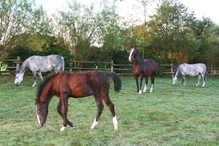
From foal to yearling
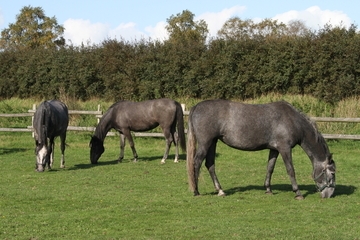
Young mares
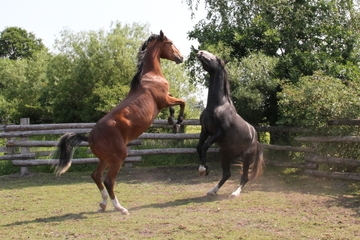
Young stallions
Training
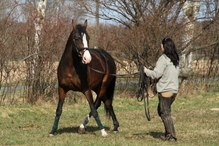
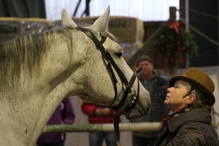
Training philosophy

Basic Training
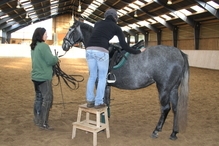
First steps with a rider
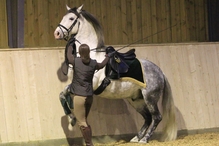
Advanced training
Stud events
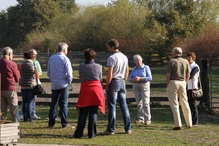

Lectures
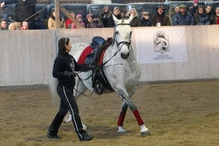
Stud presentations
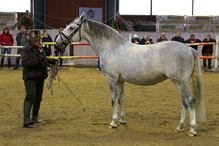
Lipizzans close up
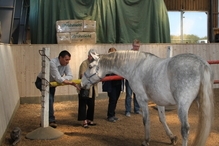
Guest at "Unter den Linden"
Media coverage
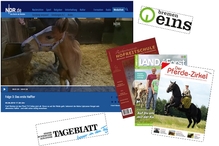
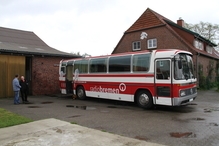
Bremen Eins is visiting

Press cuttings
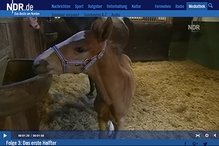
TV coverage
Looking Back
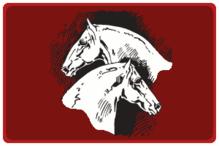
Looking Back
Already as a young girl, when I was starting with riding lessons, I was fascinated by a Lipizzan stallion.
When I asked, if I might brush a horse the stallion was led out of the stable and I was taught how to use the curry comb and comb for the first time with expert supervision and instruction.
About a year later I was to ride this stallion for the first time. I saddled him with a pounding heart. After all, I knew quite well how temperamental he could react to some of his riders. The stallion followed me not only obediently into the riding arena, but he was also a pleasant and cooperative mount.
A delightful lesson at the head of the group culminated in the riding instructor, Hans-Joachim Bruno, awarding me spurs. Wearing spurs, he solemnly stressed, is an honor and a duty. Because even with very sensitive and ticklish horses one had to push one's heels down and keep one's legs quite still in order not to annoy the horse. This Lipizzan stallion behaved very gentlemen like on subsequent occasions and started my interest in the Lipizzaner breed and its history since that time.
Working as a journalist I was able to cover a large number of horse breeding events and sports activities like show-jumping and dressage test.
Breed events were of particular interest to me. During my time, breeders changed the type of the Hessen horse from a heavy warmblood suited for working at farms to a lighter versatile sports horse. To become equally adept in dressage, show-jumping and driving and eventing as well as a leisure horse. So it's not surprising that my first horse was a Hessen mare. Her ancestry was based on Hanoverian stallions as well as Thoroughbred stallions in almost every line.
Professional reasons caused residencies abroad for several years. During that time I continued horseback riding and was interested in the local habits in horse husbandry and sport. I learned to ride side-saddle in England and we brought a Thoroughbred from Brazil back to Germany.
After returning from Brazil, my Hessen mare gave birth to a beautiful colt and we started looking for our own stud farm.
I remembered my old love for the Lipizzan breed and started breeding Lipizzans. For 20 years our small herd had its home in an idyllic rural location in northern Germany. Although this area called “Geest” had not the altitude of the Karst Mountains, the cradle of the Lipizzan breed, its rather barren and stony soils resembled a little bit the rearing conditions in Lipica.
Lipica is Slovenian for "little linden tree". Since our old Lower Saxony farm house was surrounded by linden trees, it was quite obvious to name the farm "Unter den Linden". The farm was situated in the midst of its pastures and meadows. Previously some of the field were cultivated as a corn monoculture. We changed those into meadows with a variety of grass types particularly suitable for horses, interspersed with various herbs. So we could harvest an aromatic hay for our Lipizzans.
Our breeding stock was exclusively offspring from traditional bloodlines. As with all Lipizzans, their pedigrees went back to the founders of the mare families or stallion lines. In some cases as far back as 1755. Our goal in breeding was to preserve the original type of the noble baroque horse of pomp and circumstance, both in its external appearance and in its character.
Being aware of the great variety of coat colors existing originally in the Lipizzan breed I started breeding with two bay mares. There was the idea, too, that colored horses could reduce the occurrence of melanoma in gray horses. This has now been confirmed by scientific studies and now some state studs, such as Piber, also use colored specimen for this purpose.
It turned out that the coat of these two mares was bay but they were also carriers of the Sabino Gene. A remnant of the colorful coat varieties from baroque times.
We did not want to simply reproduce Lipizzans, but to breed specifically on the basis of the old genes as described in the original studbook (see Background) to preserve the original type. The foals would be raised within the herd. Their suitability for riding purposes would be tested with our initial training before any offspring was offered for sale.
By a lucky coincidence, in January 2000, we were able to purchase the almost ten-year-old mare Ravata. She had already been passed through by two different owners and had given birth to three foals. Right from the beginning there was a deep mutual trust between Ravata and me. She was the undisputed leader of our small herd. After raising her last foal she started a second career as a reliable side-saddle horse.
At our stud shows she was presented with double reins. This was an impressive sign of trust, because in the early days she steadfastly refused to pick up a bit at all.
Whilst we have retired from actual breeding and sold our farm, we continue to offer answering any questions concerning the breed.
More about rearing and training Lipizzans you will find on the following pages.


